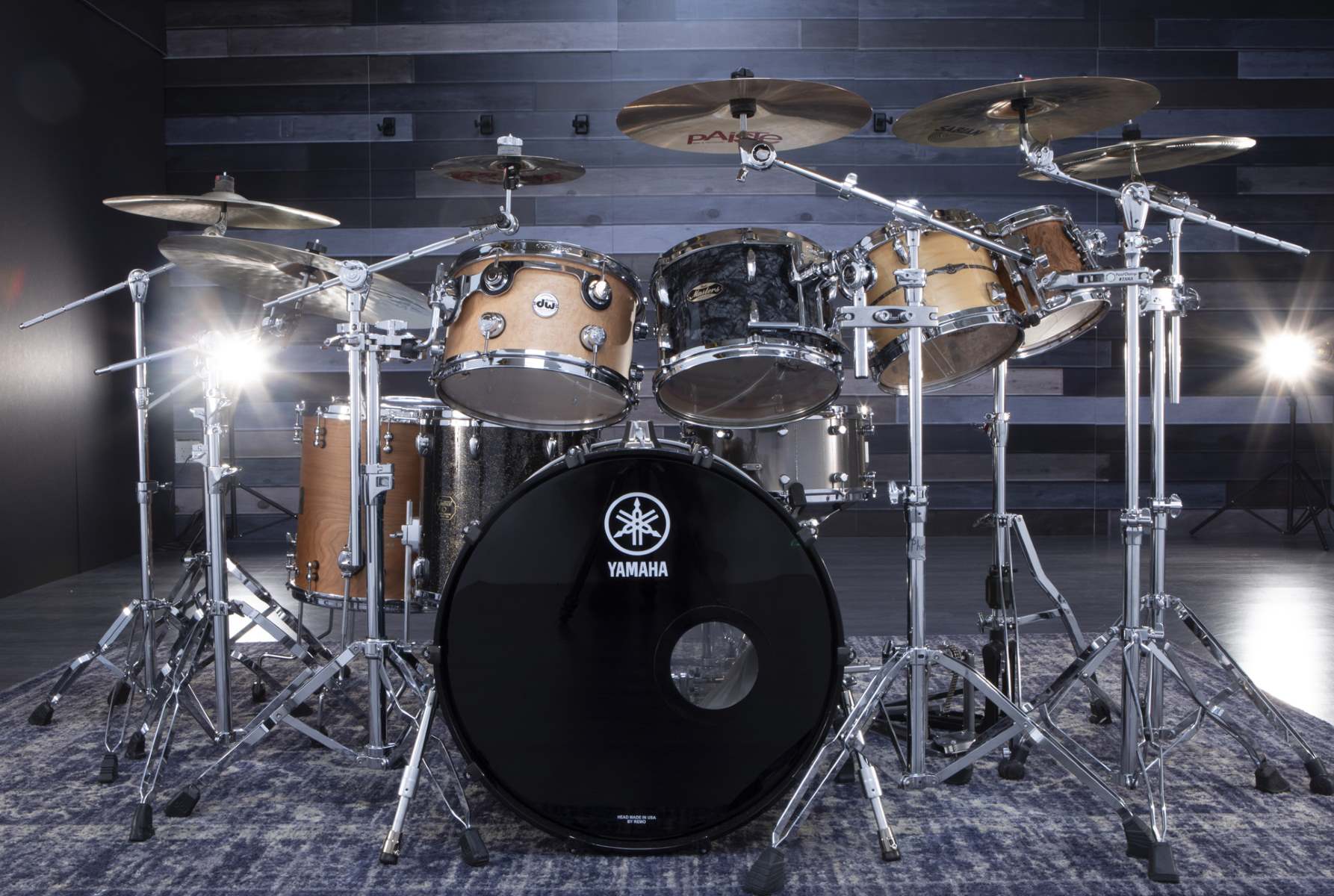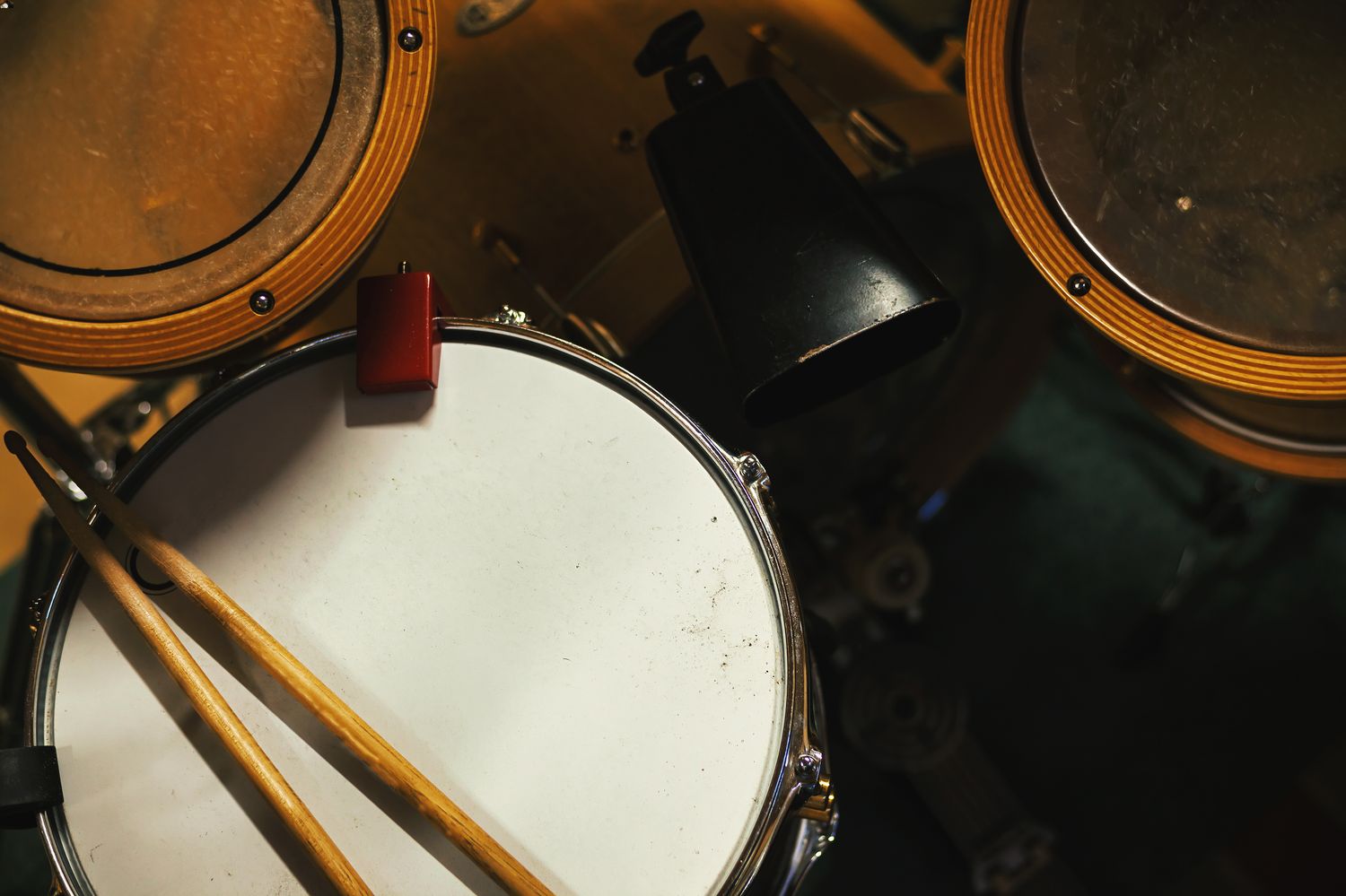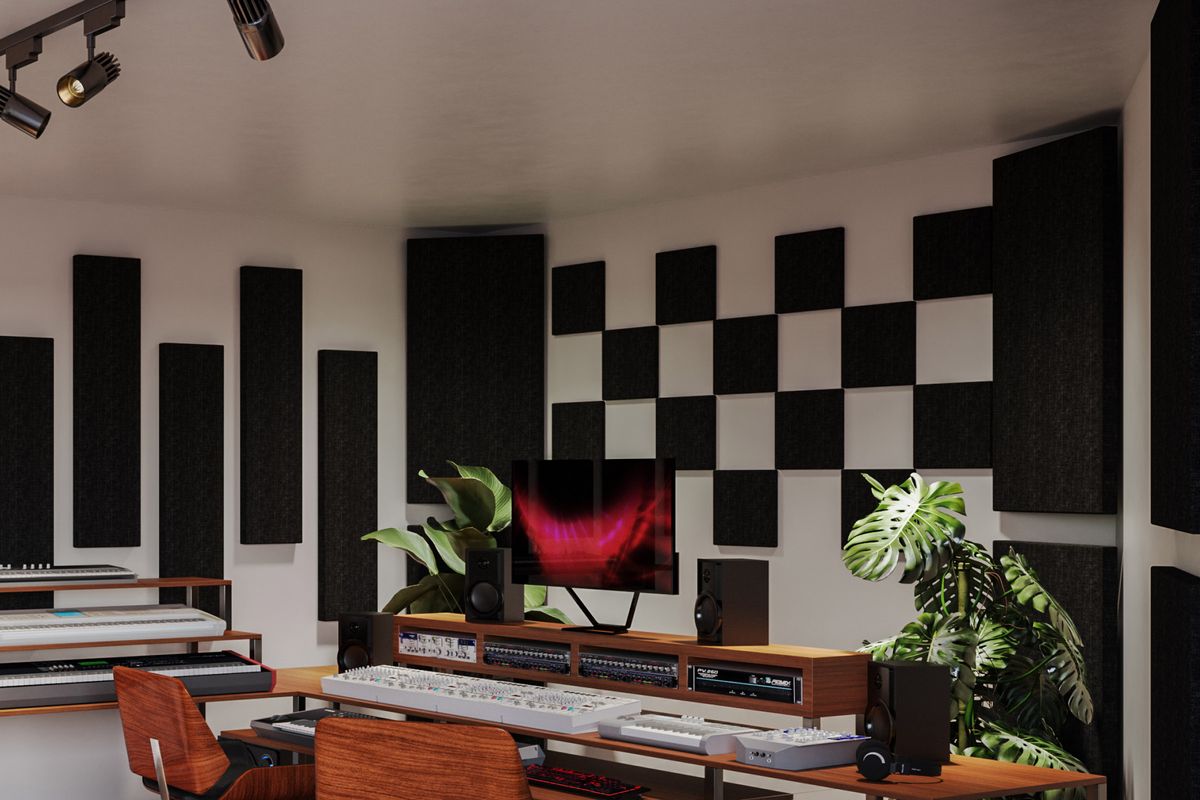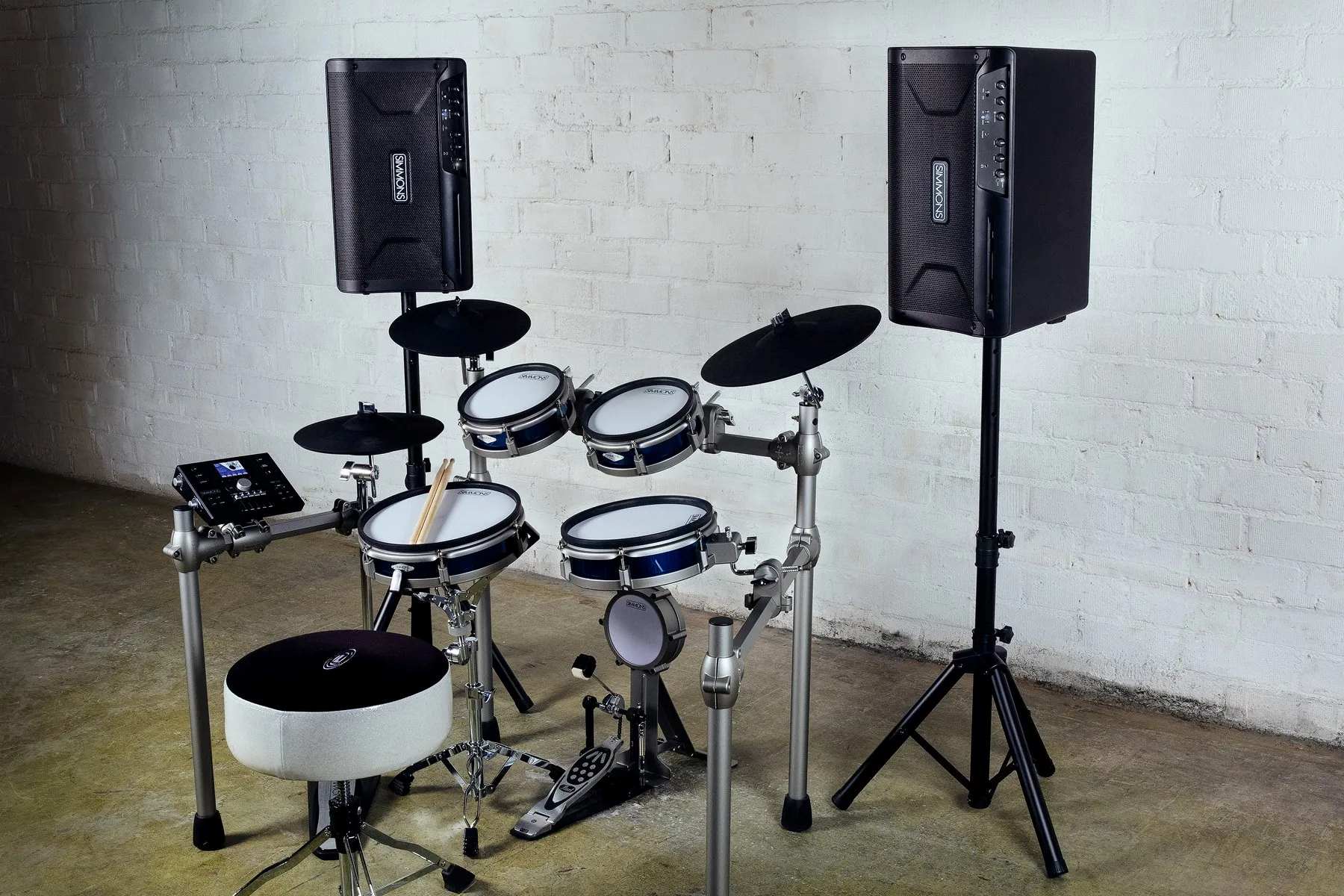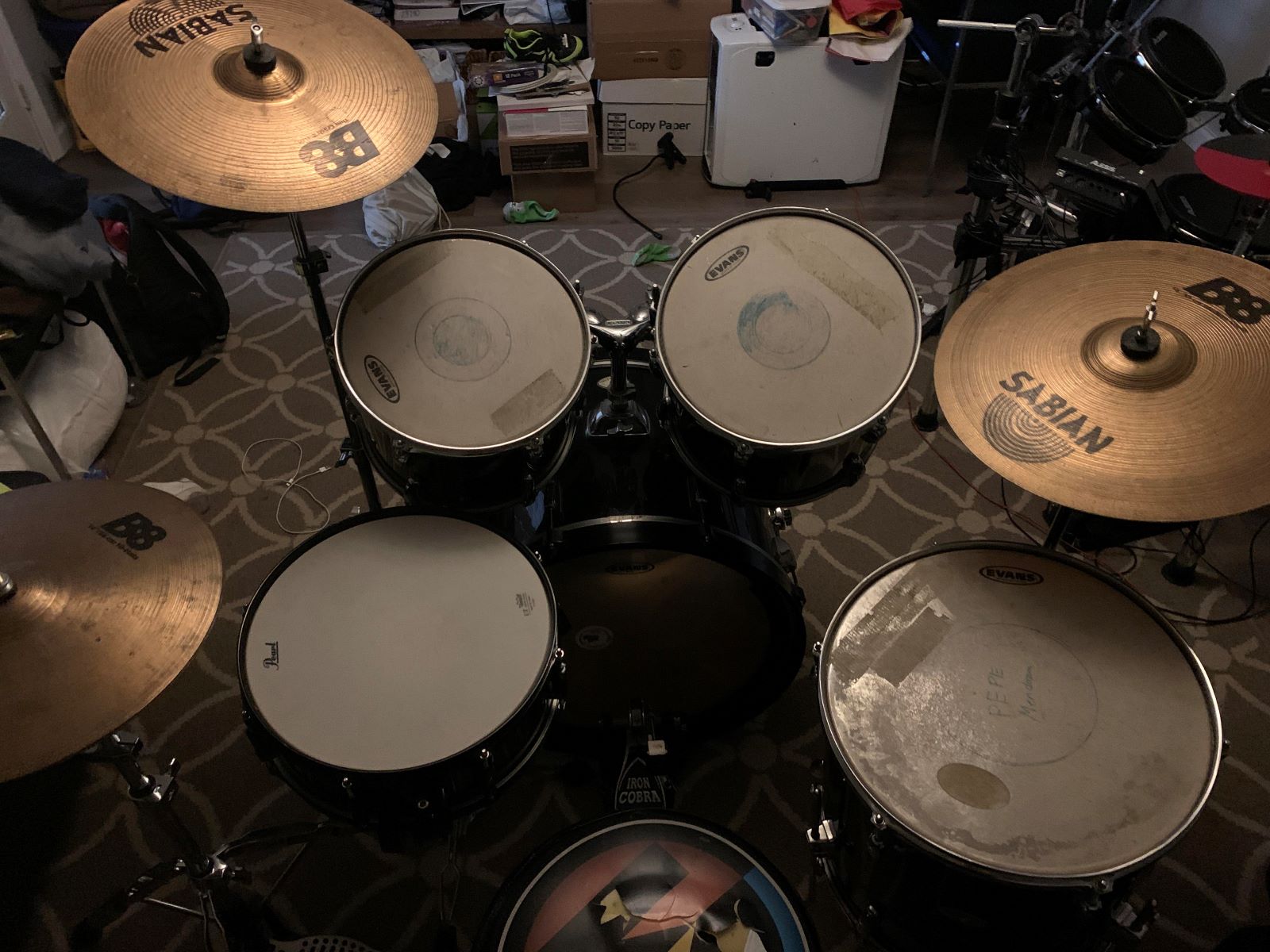Home>Instruments>Drums>How To Make Trap Drums


Drums
How To Make Trap Drums
Published: February 7, 2024
Learn how to make trap drums with our comprehensive guide. Discover essential techniques for creating unique and impactful drum patterns. Master the art of trap drums today!
(Many of the links in this article redirect to a specific reviewed product. Your purchase of these products through affiliate links helps to generate commission for AudioLover.com, at no extra cost. Learn more)
Table of Contents
Introduction
Introduction
Welcome to the world of trap drums, where the heartbeat of the music lies in the powerful and intricate rhythms of the drums. In this comprehensive guide, we'll delve into the art of creating captivating trap drum patterns that form the foundation of this dynamic genre. Whether you're a budding producer or a seasoned beatmaker looking to refine your skills, understanding the nuances of trap drums is essential for crafting compelling tracks that resonate with listeners.
The allure of trap music lies in its fusion of hip-hop, electronic, and southern influences, resulting in a genre known for its hard-hitting beats and infectious energy. At the core of these infectious beats are the drums, which play a pivotal role in shaping the mood and groove of a trap track. From thunderous 808 kicks to crisp snares and intricate hi-hats, every element of the drum pattern contributes to the overall sonic tapestry of trap music.
In this guide, we'll explore the fundamental aspects of crafting trap drums, from selecting the right drum samples to layering, tuning, and processing techniques that elevate the rhythmic foundation of your productions. Whether you're aiming to create booming, trunk-rattling bangers or delve into more experimental and nuanced trap styles, mastering the art of trap drums will empower you to infuse your tracks with the distinctive character and intensity that define this genre.
So, grab your drum samples, fire up your DAW, and get ready to explore the intricacies of trap drums as we embark on this rhythmic journey together. By the end of this guide, you'll have the knowledge and tools to craft compelling trap drum patterns that command attention and elevate your productions to new heights. Let's dive in and uncover the secrets of crafting mesmerizing trap drums that will leave a lasting impact on your listeners.
Understanding Trap Music
Understanding Trap Music
Before diving into the intricacies of crafting trap drums, it’s essential to grasp the essence of trap music as a genre. Originating from the southern United States, particularly Atlanta, Georgia, trap music has evolved into a global phenomenon, influencing a wide array of musical styles and artists. At its core, trap music embodies a raw and unapologetic energy, characterized by its heavy basslines, aggressive lyrical content, and, of course, its distinctive drum patterns.
The term “trap” originally referred to the environment of drug dealing and street hustling, and the music reflects the intensity and urgency associated with these experiences. The genre’s sonic landscape often features ominous melodies, minor key progressions, and a pervasive sense of tension, creating a mood that is simultaneously captivating and foreboding.
One of the defining features of trap music is its emphasis on rhythm, with the drum patterns serving as the driving force behind the music’s infectious groove. The use of Roland TR-808 drum machines, characterized by their deep, booming kicks and crisp snares, has become synonymous with trap production, contributing to the genre’s unmistakable sonic identity.
Furthermore, trap music’s influence extends beyond its sonic characteristics, permeating popular culture and shaping contemporary music trends. From the emergence of trap-influenced pop hits to the genre’s pervasive impact on hip-hop and electronic music, the allure of trap transcends traditional genre boundaries, captivating audiences with its potent blend of raw emotion and unrelenting energy.
As a producer or beatmaker, understanding the cultural and musical roots of trap music provides valuable insight into the expressive potential of the genre. By immersing yourself in the sonic tapestries woven by trailblazing trap artists and producers, you can glean inspiration and glean a deeper understanding of the rhythmic intricacies that define trap music. Armed with this knowledge, you’ll be well-equipped to embark on the creative journey of crafting compelling trap drum patterns that honor the genre’s rich heritage while pushing sonic boundaries.
Selecting the Right Drum Samples
Selecting the Right Drum Samples
When it comes to crafting captivating trap drum patterns, the foundation lies in selecting the right drum samples. The sonic character and quality of your drum samples play a crucial role in shaping the overall impact and vibe of your beats. Here are key considerations to keep in mind when choosing drum samples for your trap productions:
- 808 Kicks: The iconic 808 kick drum is a cornerstone of trap music, revered for its deep, resonant thump that underpins the low end of the mix. When selecting 808 kick samples, focus on finding ones that possess a rich, sustained low-frequency presence while offering flexibility for tuning and shaping the envelope to suit your track’s vibe.
- Snares and Claps: Crisp and punchy snares and claps are essential for driving the rhythm and adding impact to your trap beats. Look for samples with a sharp transient attack and a balanced tonal character, allowing them to cut through the mix with clarity and authority.
- Hi-Hats and Cymbals: The intricate, skittering rhythms of hi-hats and cymbals are integral to creating the dynamic groove of trap music. Seek out hi-hat samples with varying degrees of openness and articulation, as well as cymbal samples that provide shimmering textures and accents to embellish your drum patterns.
- Percussion Elements: Experiment with diverse percussion samples, such as shakers, tambourines, and unique metallic sounds, to add layers of rhythmic complexity and interest to your trap arrangements. These elements can inject movement and character into your drum patterns, elevating them beyond conventional rhythms.
Additionally, consider the sonic cohesion of your drum samples within the context of your overall production. Aim for a balanced blend of samples that complement each other tonally and rhythmically, creating a cohesive ensemble that propels the energy and momentum of your trap tracks.
Furthermore, don’t hesitate to explore unconventional and experimental drum samples that push the boundaries of traditional trap sounds. Embracing innovation and sonic exploration can lead to the discovery of unique textures and timbres that set your productions apart, infusing them with a distinct sonic identity.
By thoughtfully curating and selecting drum samples that align with your artistic vision, you’ll lay a strong foundation for crafting compelling trap drum patterns that captivate listeners and elevate your productions to new heights.
Layering and Tuning Drums
Layering and Tuning Drums
Layering and tuning drums are essential techniques that can elevate the impact and depth of your trap drum patterns, allowing you to sculpt dynamic and expressive rhythms that resonate with listeners. By judiciously layering drum samples and finely tuning their sonic characteristics, you can infuse your beats with a rich and nuanced sonic palette. Here’s how to master the art of layering and tuning drums for your trap productions:
- Layering: Experiment with layering multiple drum samples, such as kicks and snares, to create composite sounds that possess enhanced presence and impact. By blending the tonal qualities and transient characteristics of different samples, you can craft drum sounds that cut through the mix with authority and depth. Additionally, consider layering subtle percussion elements to add intricate textures and rhythmic complexity to your drum patterns.
- Tuning: Pay close attention to the tuning of your drum samples to ensure that they resonate harmoniously within the context of your track. For 808 kicks, in particular, tuning the pitch to align with the key of your composition can reinforce the low-end foundation and create a cohesive sonic landscape. Similarly, tuning snares and other percussive elements can help maintain tonal coherence and ensure that each drum sound contributes to the overall sonic tapestry of your production.
- Envelope Shaping: Utilize envelope shaping tools, such as ADSR (Attack, Decay, Sustain, Release) parameters, to tailor the transient response and sustain of your drum samples. By refining the envelope characteristics, you can sculpt the punch and decay of your kicks, snares, and percussion, shaping them to suit the rhythmic dynamics and mood of your track.
- Phase Alignment: When layering multiple drum samples, pay attention to phase coherence to prevent phase cancellation and ensure that the combined sounds reinforce each other. Adjusting the phase relationship between layered elements can enhance their collective impact and clarity, preventing potential sonic conflicts and muddiness.
Furthermore, consider the spatial placement of your layered drum sounds within the stereo field, utilizing panning and spatial processing to create a sense of depth and dimension. By judiciously positioning and spatializing layered elements, you can imbue your drum patterns with spatial interest and immersive presence, enhancing the overall sonic experience for your listeners.
Mastering the art of layering and tuning drums requires attentive listening and an experimental mindset. By exploring diverse combinations of drum samples and meticulously refining their sonic attributes, you’ll unlock the potential to craft captivating trap drum patterns that command attention and infuse your productions with undeniable rhythmic allure.
Creating Unique Patterns
Creating Unique Patterns
Unleashing the full creative potential of trap drums involves crafting unique and compelling rhythmic patterns that captivate listeners and drive the momentum of your productions. By infusing your drum arrangements with inventive nuances and unexpected twists, you can elevate your tracks to new heights of sonic intrigue. Here’s how to cultivate originality and dynamism in your trap drum patterns:
- Rhythmic Variations: Embrace experimentation and explore unconventional rhythmic variations within your drum patterns. Introduce unexpected syncopations, ghost notes, and offbeat accents to infuse your rhythms with a sense of unpredictability and groove. By defying conventional expectations, you can create drum patterns that demand attention and convey a distinct sense of personality.
- Dynamic Transitions: Incorporate dynamic transitions and fills to add momentum and fluidity to your drum arrangements. Utilize drum fills, rolls, and stutter effects to punctuate transitions between sections, injecting excitement and anticipation into your tracks. These transitional embellishments can heighten the impact of pivotal moments within your music, keeping listeners engaged and immersed in the rhythmic journey.
- Modular Sequencing: Experiment with modular sequencing techniques to create evolving and mutating drum patterns that evolve over time. By manipulating the sequencing and triggering of drum elements, you can craft evolving rhythmic sequences that unfold in a non-linear fashion, captivating listeners with their ever-changing dynamics and textures.
- Textural Layering: Introduce textural layering within your drum patterns by incorporating subtle atmospheric elements, such as vinyl crackle, ambient noise, or field recordings. These textural embellishments can add depth and character to your drum arrangements, imbuing them with a sense of sonic richness and narrative intrigue.
Moreover, don’t be afraid to draw inspiration from diverse musical genres and styles, infusing elements of experimentation and eclecticism into your trap drum patterns. By transcending traditional boundaries and embracing a spirit of sonic exploration, you can cultivate a signature rhythmic identity that sets your productions apart.
Ultimately, the quest for creating unique trap drum patterns is a journey of artistic expression and sonic discovery. By embracing innovation, rhythmic ingenuity, and a willingness to defy conventions, you’ll unlock the potential to craft drum arrangements that resonate with authenticity and originality, leaving a lasting impression on your listeners.
Adding Effects and Processing
Adding Effects and Processing
Enhancing the sonic impact and character of your trap drum patterns involves the strategic application of effects and processing techniques that elevate the rhythmic textures and imbue them with a distinctive sonic identity. By harnessing the power of audio effects and meticulous processing, you can sculpt your drum arrangements to command attention and infuse your productions with unparalleled dynamism. Here’s how to integrate effects and processing to enrich your trap drum patterns:
- Compression and Saturation: Apply dynamic processing, such as compression and saturation, to imbue your drum sounds with enhanced punch, warmth, and presence. By taming transient peaks and introducing harmonically rich saturation, you can amplify the impact and energy of your drum patterns, ensuring that they cut through the mix with clarity and authority.
- Reverberation and Ambience: Introduce spatial depth and dimension to your drum patterns by incorporating reverberation and ambient effects. Experiment with varying reverb decay times and pre-delay settings to create immersive spatial environments that envelop your drum sounds, adding a sense of depth and atmospheric allure to your rhythmic arrangements.
- Modulation and Movement: Utilize modulation effects, such as chorus, flanger, and phaser, to introduce captivating movement and textural evolution within your drum patterns. By applying subtle modulation to select drum elements, you can infuse them with a sense of animated vitality and dynamic interest, enhancing the overall rhythmic narrative of your tracks.
- Transient Shaping and EQ Sculpting: Fine-tune the transient characteristics and tonal balance of your drum samples through precise transient shaping and EQ sculpting. Tailor the attack and sustain of your kicks and snares, sculpting their tonal profiles to ensure that they occupy the frequency spectrum with clarity and definition, anchoring the rhythmic foundation of your productions.
Furthermore, consider the creative potential of parallel processing and send effects, utilizing parallel compression, distortion, and other treatments to add weight and impact to specific elements within your drum patterns. By harnessing the versatility of parallel processing, you can sculpt the sonic intricacies of your drum arrangements with surgical precision, enhancing their expressive impact and sonic richness.
As you explore the realm of effects and processing for trap drums, maintain an experimental mindset and a keen ear for sonic detail. Embrace the creative freedom to push the boundaries of traditional processing techniques, seeking innovative ways to sculpt your drum patterns with a sense of sonic artistry and individuality.
Conclusion
Conclusion
Congratulations on embarking on this rhythmic journey through the realm of trap drums. As we conclude our exploration, it’s evident that the art of crafting compelling trap drum patterns is a dynamic and multifaceted endeavor that demands creativity, technical finesse, and a deep understanding of rhythmic expression. By mastering the intricacies of trap drums, you’ve equipped yourself with the tools to infuse your productions with the unmistakable energy and allure of this genre, captivating listeners and leaving an indelible imprint on their sonic experience.
From understanding the cultural and musical roots of trap music to selecting the right drum samples that embody your artistic vision, you’ve delved into the foundational elements that underpin the rhythmic tapestry of trap productions. The nuances of layering and tuning drums have empowered you to sculpt dynamic and expressive rhythms, while the pursuit of creating unique patterns has unlocked the potential for sonic innovation and rhythmic ingenuity within your music.
As you navigate the realm of effects and processing, you’ve embraced the transformative power of audio treatments to elevate the sonic character and impact of your trap drum patterns, adding depth, dimension, and sonic richness to your productions.
Remember, the journey of refining your craft as a producer or beatmaker is an ongoing pursuit, and the realm of trap drums offers boundless opportunities for sonic exploration and artistic growth. Embrace the spirit of experimentation, harness the power of innovation, and let your creativity flourish as you continue to sculpt mesmerizing trap drum patterns that resonate with authenticity and originality.
With each rhythm you craft, you contribute to the ever-evolving tapestry of trap music, leaving your mark on the genre’s vibrant legacy. So, dive into your DAW, unleash your rhythmic imagination, and let the pulse of trap drums propel your productions to new heights of sonic excellence. The world awaits the rhythmic magic that only you can weave.

